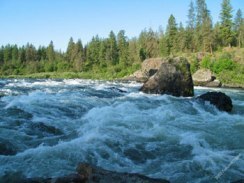The relief is formed from internal (endogenous) and external (exogenous) factors, the internal or endogenous ones coming from tectonic movements or continental masses.
Tectonic movements are recognized according to the type of deformation produced in the plates, in addition to the intensity of the forces used on them. In this sense, there are two types of movements called eirogenesis and orogenesis.
Epirogenesis
Epirogenesis is an expression created by Gilbert in 1890, the name had as its main objective to designate the geological phenomenon that results in tectonic movements in the vertical direction. If this movement is up, it is called uplift and down, subsidence.
Do not stop now... There's more after the advertising ;)
Orogeny
Orogenesis is a tectonic movement that occurs horizontally, and can have two configurations: convergent, when two plates collide; and divergent, when two plates move apart. The first causes the appearance of folds and mountain ranges and the second is responsible for the formation of dorsal (underwater mountain ranges).
By Eduardo de Freitas
Graduated in Geography
Would you like to reference this text in a school or academic work? Look:
FREITAS, Eduardo de. "Epirogenesis and Orogeny"; Brazil School. Available in: https://brasilescola.uol.com.br/geografia/epirogenese-orogenese.htm. Accessed on July 27, 2021.



